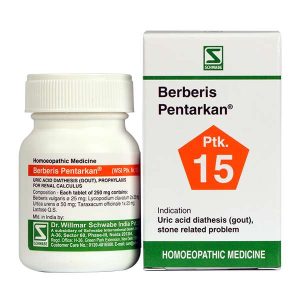
Kidney Stones
-
-18%
 Rated 4.80 out of 5 based on 5 customer ratings(5)
Rated 4.80 out of 5 based on 5 customer ratings(5)₹185.00₹151.70 You Save: ₹33.30 (18%)Add to cart
Showing the single result
A kidney stone is a solid mass made up of tiny crystals. One or more stones can be in the kidney or ureter at the same time. When a solution can no more dissolve a substance it is called saturation point. And when a solution contains more of the dissolved material than it can actually dissolve, it is called super-saturation. In healthy conditions enzyme system maintains balanced super-saturation which fails in disease condition where chemicals precipitate out in form of crystals.
Causes and factors
There are various causes behind the formation of renal stones of which dietary factor plays a vital role. Lifestyle changes, changing trends in food habits, low fluid intake, etc. increase the risk of developing renal stones. Certain other factors like physiological changes in the urine (eg. urinary pH, specific gravity, etc.), urinary tract infection, urinary stasis, hyperexcretion of urinary constituents such as oxalates, calcium, uric acid, cystine and conditions like hyperparathyroidism, hyperoxaluria, etc. are favourable conditions in the urinary system for the formation of urinary stones by a situation of super-saturation due to failure of in-built mechanism to prevent it.
Apart from the above, following factors may have influence.
- Family or personal history: Having a family member with kidney stones may increase the chance of developing stones.
- Certain diets. Eating a diet that’s high in protein, sodium and sugar may increase your risk of some types of kidney stones. This is especially true with a high-sodium diet.
- Overweight and obesity.
- Certain digestive problems and related surgeries: Inflammatory bowel disease, chronic diarrhea and gastric bypass surgery, can cause changes in the digestive process that affect the absorption of calcium and water, increasing the levels of stone-forming substances in the urine.
- Other medical conditions. Certain other conditions like renal tubular acidosis, cystinuria, hyperparathyroidism, certain medications and some urinary tract infections may increase the risk of renal stone formation.
Symptoms
A kidney stone may not cause symptoms until it moves or dislodges from the place of origin. Nature of pain may change time to time due to the current location and size of the stone. When the stone moves down from the kidney to ureter to bladder, different type of pain is felt. At times the intensity may come down if the stone is broken into pieces. At that point, followed signs and symptoms may be experienced.
Pain related symptoms
- Severe pain in the side, back and below the ribs
- Pain may spread to the lower abdomen and groin
- Usually the nature of the pain would be wavy and the intensity would be fluctuating
- Pain during micturition (urination)
Symptoms related to nature of urine
- At times the colour of urine would be pink, red or brown
- Urine may look cloudy with offensive smell
Other associated symptoms
- Pain may be accompanied by nausea and vomiting
- Frequent urination with constant urge to urinate
- Fever and chills if an associated infection is present
- Scanty urine
Effects of renal stone and the recurrence
The stones formed have different effects on both the kidneys. On the kidney in which the stone is formed, there could be obstruction of urinary outflow, infection, local ischemia and metaplasia. On the other kidney, there may be compensatory hypertrophy, and infection. Sometimes the stones may be bilateral with severe damage to the system. Even after the treatment, there is a greater chance of recurrence.
Prevention
- · Drink water throughout the day at least 2-3 litters/day
- Restrict foods rich in oxalates. These include beetroots, spinach, tomato, peanuts, amla, cucumber, sweet potatoes, nuts, tea, chocolate and soy products.
- · Choose a diet low in salt and animal protein.
- Continue eating calcium-rich foods, but use caution with calcium supplements
Homoeopathic management
Homoeopaths normally manage such cases on the basis of type of pain, modalities, proneness to the formation of stone, etc. Usually homoeopaths prescribe drugs like Lycopodium (if the stone is on the left side), Calcarea carbonica (if the stone is on the right side), with other ancillary drugs like Belladonna, Berberis vulgaris Q, Cantharis Q, Ocimum canum Q, Sarsaparilla Q, Sepia, Urtica urens Q and others along with Berberis Pentarkan on long term basis.
Get remedy
Please consult your homoeopath.
Disclaimer: The information provided herein on request should not be taken as a replacement of medical advice or for the diagnosis or treatment of any medical condition.
Blog Post


Effects of Diabetes, Smoking, and Other Factors on Sexual Health


Plant-based Protein vs. Animal Protein: Which is Better for Your Health?




























